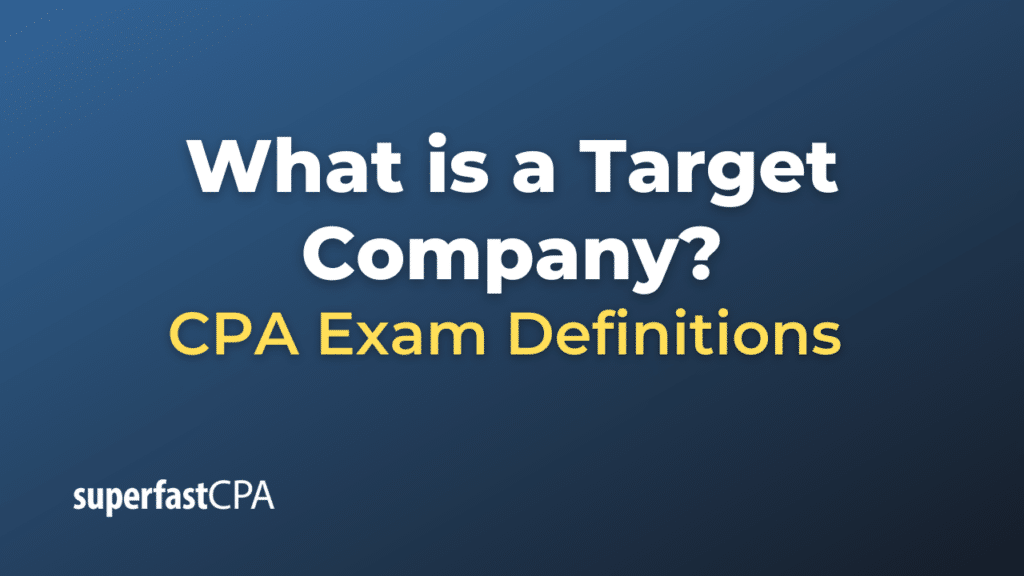Target Company
A target company refers to a corporation that another entity, either an individual or a corporate body, is attempting to acquire or take over. This acquisition attempt can be achieved through various methods, such as buying a majority stake in the company’s shares, a merger, or a direct purchase of the company’s assets.
When one company (the “acquiring” or “bidding” company) has the intent to acquire another company (the “target”), it may do so for a variety of reasons, including:
- Strategic Expansion: To expand into a new market or product segment.
- Synergies: The belief that the combined operations of both companies will be more efficient or profitable than they would be separately.
- Acquiring Assets: Particularly if the target company has valuable intellectual property, real estate, or other assets.
- Eliminating Competition: By acquiring a competitor, a company can potentially secure a larger market share.
- Tax Reasons: Some acquisitions might be driven by tax benefits or strategies.
- Diversification: To diversify product offerings or reduce risk exposure to a single sector or market.
- Talent Acquisition: Sometimes referred to as “acqui-hiring”, this is when a company is purchased primarily to recruit its skilled employees.
A target company can either be open to being acquired (resulting in a friendly takeover) or resistant to the acquisition (leading to a potential hostile takeover). In either scenario, the process generally involves due diligence, negotiations, and regulatory approval to ensure that the acquisition complies with relevant laws and regulations, especially if the companies involved are large and have significant market shares.
Example of a Target Company
One of the most notable examples of a target company in a significant acquisition is the purchase of LinkedIn by Microsoft in 2016.
Background:
- LinkedIn is a professional networking platform where individuals can connect with colleagues, look for jobs, and share professional updates. It has become one of the most prominent platforms for professional networking globally.
- Microsoft, the tech giant known for its Windows operating system, Office suite of productivity software, and other technologies, wanted to expand its presence in the social networking domain and saw LinkedIn as a strategic fit.
Acquisition Details:
- Announcement: In June 2016, Microsoft announced its intention to acquire LinkedIn.
- Value: Microsoft acquired LinkedIn in an all-cash transaction valued at $26.2 billion.
- Reasons for Acquisition:
- Strategic Integration: Microsoft planned to integrate LinkedIn with several of its products, including the Office suite and its CRM software Dynamics.
- Data: LinkedIn’s vast data on professionals and companies would offer Microsoft new insights and potential integration points for its cloud-based services.
- Expand Presence: The acquisition would help Microsoft strengthen its position in the social networking space, especially in the professional domain.
- Outcome:
- The deal was finalized by the end of 2016.
- Since the acquisition, Microsoft has integrated LinkedIn’s capabilities into its existing services, like Microsoft 365, and has further developed LinkedIn’s offerings.
- LinkedIn continued to operate as its own brand under the Microsoft corporate umbrella.
In this scenario, LinkedIn was the “target company,” and Microsoft was the acquiring or bidding company. The acquisition was friendly, with both companies seeing potential synergies and benefits from the deal.













